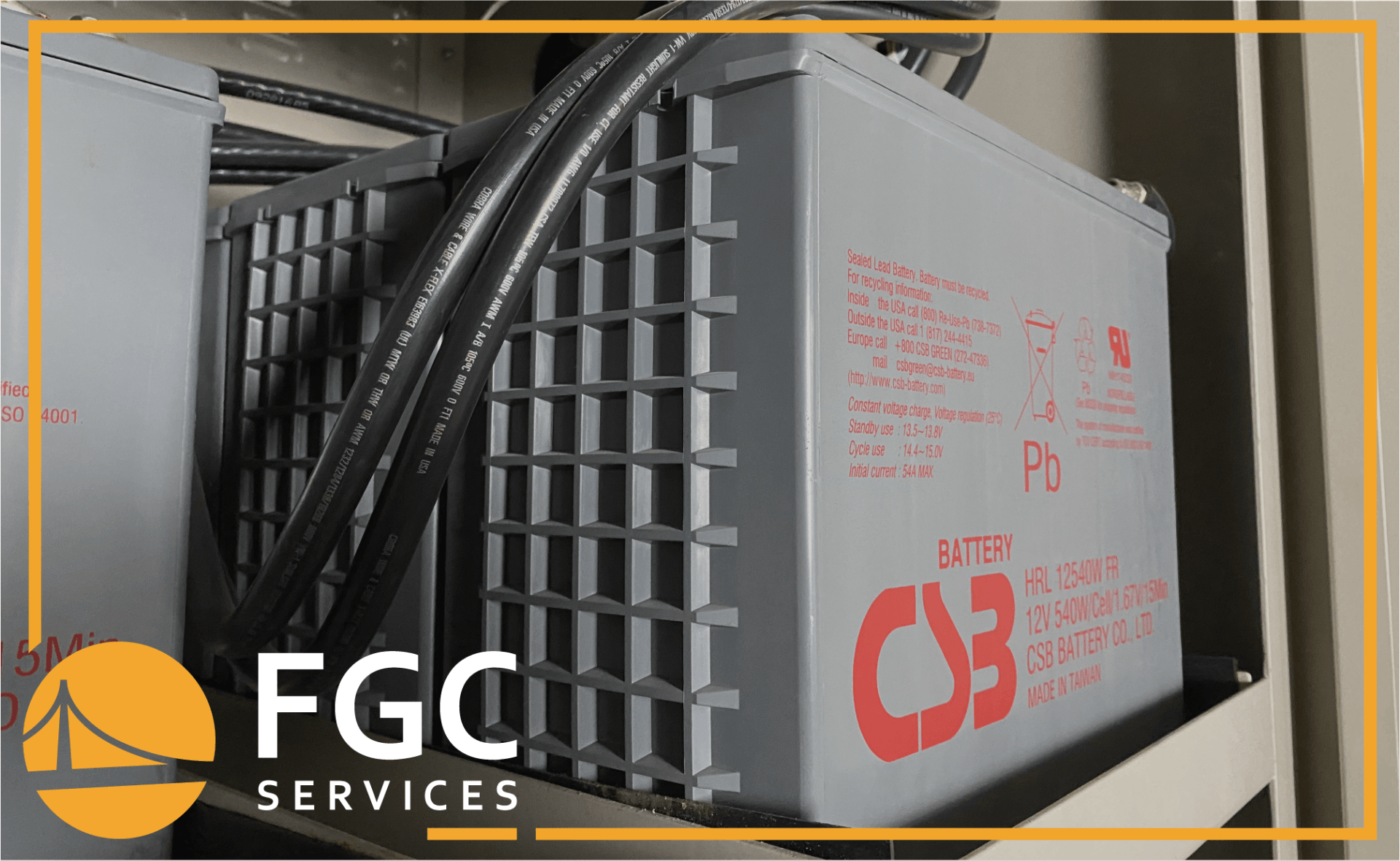OEMs vs Third-Party UPS Maintenance
20 December 2022
Share this article:
UPS systems rely on storing power inside their battery that can be used as a backup energy source for connected devices. While there are different types of UPS devices for applications, there are also many types of UPS batteries.
When it comes time to replace the UPS battery, you want to get the one that offers the right amount of backup power for your devices. The types of UPS batteries to have will depend on the application, shelf life, and your budget.

Often companies don't have the staff or the experience onsite to perform due diligence and maintenance on their uninterruptible power supply (UPS) systems. Hiring a company to perform maintenance can provide varying benefits such as professional tech who can do the work efficiently as well as warranty guarantees. When deciding on a maintenance company to hire, the two main choices are the original equipment manufacturer (OEM) or third party maintenance specialists.
The Pros and Cons of OEM UPS Maintenance
OEM maintenance for UPS systems often is offered at the point of sale. There may be a specific time frame to receive this maintenance, often for free, with the option to continue with a paid contract. Other OEM's provide a limited lifetime guarantee for parts and labor.
The major advantage of using the OEM for maintenance is that the OEM is familiar with the technical specs of the particular purchased system. They have invested vast sums of money in the research and development of their products. They only have a half dozen or so products in current production and provide technical training to their field teams on only their products.
Overall, the advantage of an OEM is that you will have a company that knows how the UPS system works from the inside out, will typically have the parts available, and will have factory support should their field engineers need it.
However, there are some disadvantages to using an OEM for UPS maintenance. The OEM’s are in business to sell hardware and new equipment. So they have to have a field service team for startup and warranty service of their products. When it comes to post warranty service the OEM’s are not as focused on meeting clients expectations. They tend to manage their field service teams to the highest levels of utilization, oftentimes running them over 100% utilization for weeks on end. The OEM’s field service team is sized for the company's anticipated new unit startup and warranty services rather than post warranty service. This leaves them vastly undermanned to provide service to their post warranty clients.
Another issue is the cost of the post warranty service. As these large publicly traded companies are driven by their stockholders to financially outperform month after month and year after year and as such have labor rates much higher in many cases more than double or even triple that of non-oem service providers. OEM’s also make cuts in their business in areas that are not the main focus such as post warranty service. This leads them to be short staffed not only in the field but in all other areas of the field service business such as their emergency call takers, scheduling, quoting, and parts departments.
Lastly, an OEM may not provide service on your equipment as they have designated it at or beyond their end of service life (EOSL). Once a unit is classified as EOSL by an OEM they no longer will offer or provide contracted services on the equipment. They might still provide service on a time and material basis where you again will pay exorbitant labor rates as well as huge markup on non-proprietary parts that can be purchased on the open market at a fraction of the cost.
The Pros and Cons of Third Party UPS Maintenance
Third party maintenance companies, sometimes referred to as Multi-Vendor Service companies, are in the business to provide service, not sell boxes. They advertise their services to clients who are looking for UPS maintenance with field engineers in their region or community that are capable of servicing different OEM makes and models. Third party UPS maintenance companies perform the same services as an OEM, oftentimes are previous employees of the OEM, and have developed their own training from their OEM factory level experience. The third party company will have a large range of service parts stock available to service most UPS systems and other critical power equipment as well as new product solutions from multiple OEM’s.
A main advantage to hiring a third party UPS company, such as Facility Gateway Corporation (FGC) is that they are in business to provide critical power service. They have aftermarket parts for older UPS systems that are no longer available through the OEM, a vast supplier network for non-proprietary parts, allowing you to prolong the operational life of your UPS system until you are ready to upgrade to a new unit. They can also provide rental units of various sizes and have a swap out program for smaller sizes.
A downside to using a third party UPS maintenance company is they will not have the OEM proprietary software that many OEM’s utilize to lock their clients in to coming back to them for service. FGC successfully works with OEM’s on a regular basis getting these issues addressed for our clients.
Lastly, keep in mind that maintenance and repair programs will differ between an OEM and third party UPS maintenance company, as well as between one third party company from another third party company. You will have to perform research and shop around to learn about what offerings are available and their price ranges to find one that will suit your operations.
FGC Third Party Maintenance Services
At FGC, we are a third party multi-vendor maintenance company offering a wide range of services to companies. We offer both maintenance contracts as well as one-time preventive maintenance to ensure your UPS system is working optimally. If your UPS system suddenly stops working, we can provide emergency service to get the system functioning again.
Connect with Us:





